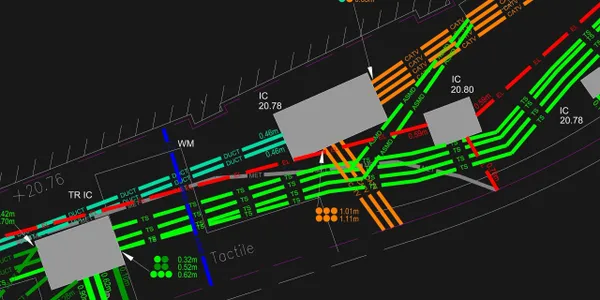I. Introduction
The Earth’s diverse ecosystems are home to a vast array of wildlife, but many species face unprecedented threats due to human activities. Harnessing the power of Artificial Intelligence (AI) in wildlife monitoring emerges as a transformative solution to protect biodiversity. This article delves into the role of AI in safeguarding the intricate balance of ecosystems and the diverse species they support.
II. Traditional Methods vs. AI in Wildlife Monitoring
Traditional wildlife monitoring methods, while valuable, often fall short in terms of efficiency and coverage. AI introduces a paradigm shift by utilizing advanced technologies such as machine learning and computer vision to process vast amounts of data, enabling real-time monitoring over large areas.
III. Camera Traps and Image Recognition
AI’s integration with camera traps revolutionizes wildlife monitoring. Image recognition algorithms analyze photos and videos captured by these traps, allowing researchers to identify and track individual animals, monitor behaviors, and collect valuable data without direct human intervention.
IV. Acoustic Monitoring and Machine Learning
In the realm of sound, AI extends its capabilities to acoustic monitoring. Machine learning algorithms can distinguish between different animal calls, enabling researchers to identify species, track migration patterns, and even detect unusual behaviors that may indicate ecological changes.
V. Satellite Technology and Data Analytics
The synergy between AI and satellite technology enhances the monitoring of large-scale habitats. Data analytics powered by AI processes satellite imagery, providing valuable insights into deforestation, habitat loss, and changes in vegetation, critical factors affecting wildlife populations.
VI. Predictive Analytics for Conservation
AI’s predictive analytics play a pivotal role in conservation efforts. By analyzing historical data, AI can forecast potential threats to specific species or ecosystems, allowing conservationists to implement proactive measures to mitigate risks and protect vulnerable wildlife.
VII. Intelligent Drones for Aerial Surveillance
Drones equipped with AI technology offer a dynamic approach to wildlife monitoring. Aerial surveillance powered by machine learning algorithms provides a bird’s-eye view of habitats, aiding in population assessments, anti-poaching efforts, and the monitoring of hard-to-reach areas.
VIII. Challenges and Ethical Considerations
While AI in wildlife monitoring presents immense opportunities, challenges and ethical considerations arise. Balancing technological advancements with ethical wildlife treatment, ensuring data privacy, and addressing biases in AI algorithms are critical aspects that demand careful attention.
IX. Citizen Science and AI Integration
Engaging the public in wildlife monitoring through citizen science initiatives enhances data collection. AI can process and analyze the large volumes of data contributed by citizen scientists, fostering a collaborative approach to understanding and conserving biodiversity.
X. Global Collaborations for Wildlife Protection
The global nature of biodiversity conservation requires collaborative efforts. AI facilitates international collaborations by standardizing data formats, enabling the sharing of AI models, and fostering a collective approach to addressing global wildlife challenges.
XI. Benefits for Ecosystem Health and Human-Wildlife Coexistence
The ultimate goal of AI in wildlife monitoring is to ensure the health of ecosystems and promote harmonious coexistence between humans and wildlife. By providing real-time insights and early warnings, AI contributes to the sustainable management of natural resources and the preservation of biodiversity.
XII. Future Frontiers: AI and Conservation Innovation
Looking ahead, the article explores the potential future frontiers of AI in wildlife conservation, from advancements in tracking individual animal health to the development of AI-driven solutions for mitigating climate change impacts on ecosystems.
XIII. Conclusion
In conclusion, AI emerges as a powerful ally in the quest to protect biodiversity through efficient and data-driven wildlife monitoring. As technology continues to advance, the integration of AI into conservation practices holds the key to preserving the rich tapestry of life on Earth.
FAQs
- How does AI benefit wildlife monitoring compared to traditional methods? AI enhances efficiency and coverage in wildlife monitoring by utilizing advanced technologies such as machine learning and computer vision for real-time monitoring over large areas.
- What role does AI play in camera trap technology for wildlife monitoring? AI’s integration with camera traps enables image recognition algorithms to identify and track individual animals, monitor behaviors, and collect valuable data without direct human intervention.
- How does AI contribute to acoustic monitoring in wildlife conservation? AI distinguishes between different animal calls in acoustic monitoring, allowing researchers to identify species, track migration patterns, and detect unusual behaviors that may indicate ecological changes.
- What are the ethical considerations in using AI for wildlife monitoring? Ethical considerations include balancing technological advancements with ethical wildlife treatment, ensuring data privacy, and addressing biases in AI algorithms.
- How can the public contribute to wildlife monitoring through AI? Citizen science initiatives allow the public to contribute data, and AI processes and analyzes this information, fostering a collaborative approach to understanding and conserving biodiversity.















